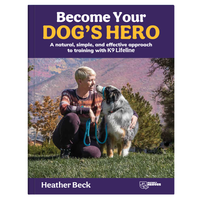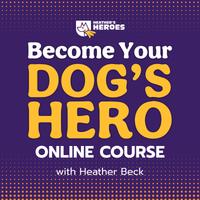Creating a Culture of Calm in Your Facility

How to Lead with Confidence, Reduce Chaos, and Build a Safer, Stronger Team
If you run a daycare, boarding, or training facility, you know the feeling: barking bouncing off the walls, dogs amped up from the moment they arrive, and staff doing their best to manage the mayhem.
It can feel like a nonstop sprint — with your team constantly reacting instead of confidently leading. But here’s the truth: high energy doesn’t have to mean high chaos.
The best facilities don’t just look calm. They feel calm — because calm is part of their culture.
Let’s talk about how to build that culture in your facility.
Why Calm Matters More Than Control
Chaos costs you more than you think.
When emotional energy is dysregulated, so are the dogs — and so are your staff. This can show up as:
-
More fights and injuries
-
Higher stress and staff burnout
-
Unhappy clients and negative reviews
-
Risk of liability and financial loss
And worst of all? It erodes the very trust and bond we want to create between dogs and their humans.
That’s why calm isn’t just a nice-to-have. It’s your most important safety system.
3 Leadership Shifts That Create Calm
Creating calm starts at the top. Here are three shifts you can make as a leader:
1. Set the Tone
Your team looks to you. If you’re frantic, rushed, or reactive, they’ll mirror that energy — and so will the dogs. Calm leadership isn’t passive. It’s purposeful, grounded, and clear.
Start every day with intention. Breathe. Slow your steps. Speak less, show more. You are the thermostat for the emotional energy in your facility.
2. Train Emotional Regulation, Not Just Tasks
It’s not enough to tell your team what to do. You have to show them how to be. Teach your staff that their posture, tone, and energy matter. A single calm handler can de-escalate an entire group of dogs.
Build in mini moments to reset throughout the day — even a 30-second pause can help regulate energy.
3. Reward Structure, Not Hustle
Don’t just praise the fastest feeder or the busiest bather. Praise the team member who notices small signs of escalation, prevents a conflict before it starts, and moves through the day with quiet confidence.
Calm is efficient. Calm is safe. Calm is the new gold standard.
Systems that Support Calm
Leadership sets the tone — but systems create sustainability. Here are a few calm-focused systems that we use daily at K9 Lifeline:
-
Crate + rest times to give dogs downtime and reset overstimulation
-
Structure + predictable routines because dogs (and staff!) thrive on consistency
-
Clear protocols so staff always know how to respond to escalation
And let’s be clear — calm doesn’t mean quiet, boring, or still. Dogs can absolutely play in a calm facility. The difference is in the energy. Structured play is joyful, not chaotic. It has rhythm, not randomness. It’s the difference between a safe, productive play session and a free-for-all that ends in over-arousal or a scuffle. Your team’s presence, awareness, and ability to intervene early is what keeps play healthy, not just fun.
💡 Want the blueprint we have used for over 20 years?
Our Keep Calm and Play On course gives you a plug-and-play framework to create structure, reduce stress, and keep everyone safe. It’s been tested in real-life facilities like yours — and it works.
👉 Learn More About Keep Calm & Play On
Calm Is Contagious
Imagine walking into your facility and hearing… nothing. Just the soft shuffle of paws, the low hum of gentle music, and your team working in quiet, focused sync.
Dogs are relaxed. Staff are confident. Clients are thrilled.
That’s the power of a calm culture.
You don’t need to hustle harder to fix the chaos. You just need the right tools, the right systems, and the right mindset.
And we’re here to help you build all three.







Leave a comment